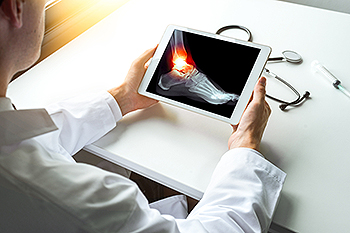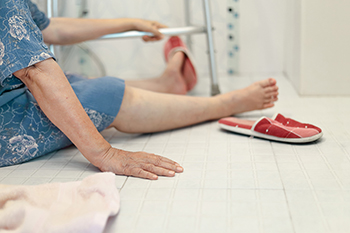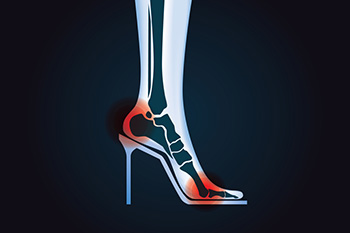Connect With Us
Blog
Items filtered by date: August 2024
Open Reduction and Internal Fixation Surgery for Broken Ankles

Open reduction and internal fixation, or ORIF, is a surgical procedure used to treat severe ankle fractures. When a bone in the ankle is broken and cannot be realigned through non-surgical methods, ORIF is typically recommended. This procedure involves making an incision over the fracture site to reposition the bone fragments into their correct alignment. Once aligned, the bones are secured with metal plates, screws, or rods to ensure stability and proper healing. ORIF is usually performed when the fracture is displaced, unstable, or involves multiple fragments. It can restore the normal anatomy of the ankle, allowing for proper function and preventing long-term complications such as arthritis. While ORIF is generally successful, it carries risks like any surgery, including infection, nerve damage, blood clots, and complications related to the hardware. If you have sustained a severely broken ankle, it is strongly suggested that you schedule an appointment with a podiatrist to discuss the possibility of ORIF surgery as a treatment worthy of consideration.
Broken ankles need immediate treatment. If you are seeking treatment, contact Howard Kimmel, DPM from Buckeye Foot Care. Our doctor can provide the care you need to keep you pain-free and on your feet.
Broken Ankles
A broken ankle is experienced when a person fractures their tibia or fibula in the lower leg and ankle area. Both of these bones are attached at the bottom of the leg and combine to form what we know to be our ankle.
When a physician is referring to a break of the ankle, he or she is usually referring to a break in the area where the tibia and fibula are joined to create our ankle joint. Ankles are more prone to fractures because the ankle is an area that suffers a lot of pressure and stress. There are some obvious signs when a person experiences a fractured ankle, and the following symptoms may be present.
Symptoms of a Fractured Ankle
- Excessive pain when the area is touched or when any pressure is placed on the ankle
- Swelling around the area
- Bruising of the area
- Area appears to be deformed
If you suspect an ankle fracture, it is recommended to seek treatment as soon as possible. The sooner you have your podiatrist diagnose the fracture, the quicker you’ll be on the way towards recovery.
If you have any questions, please feel free to contact one of our offices located in Brook Park and Willoughby, OH . We offer the newest diagnostic and treatment technologies for all your foot care needs.
Blisters From Athlete’s Foot

Blisters from athlete’s foot are a common result of fungal infections that affect the feet. Symptoms often include red, itchy, and scaly skin, which can develop into painful blisters filled with fluid. These blisters are typically found between the toes or on the soles of the feet. Risk factors for developing athlete’s foot include wearing damp or tight shoes, having sweaty feet, and walking barefoot in public places like swimming pools or locker rooms. Poor foot hygiene and a weakened immune system can also increase susceptibility. When blisters become infected, they may cause increased pain, swelling, and pus. Relief may be found by keeping the feet clean and dry, using antifungal creams, and avoiding scratching the affected areas to prevent spreading the infection. Blisters from athlete’s foot may form in clusters and can cause pain and discomfort. If you have blisters on your feet, it is suggested that you contact a podiatrist who can successfully treat this condition, in addition to relieving other athlete’s foot symptoms.
Blisters may appear as a single bubble or in a cluster. They can cause a lot of pain and may be filled with pus, blood, or watery serum. If your feet are hurting, contact Howard Kimmel, DPM of Buckeye Foot Care. Our doctor can provide the care you need to keep you pain-free and on your feet.
Foot Blisters
Foot blisters are often the result of friction. This happens due to the constant rubbing from shoes, which can lead to pain.
What Are Foot Blisters?
A foot blister is a small fluid-filled pocket that forms on the upper-most layer of the skin. Blisters are filled with clear fluid and can lead to blood drainage or pus if the area becomes infected.
Symptoms
(Blister symptoms may vary depending on what is causing them)
- Bubble of skin filled with fluid
- Redness
- Moderate to severe pain
- Itching
Prevention & Treatment
In order to prevent blisters, you should be sure to wear comfortable shoes with socks that cushion your feet and absorb sweat. Breaking a blister open may increase your chances of developing an infection. However, if your blister breaks, you should wash the area with soap and water immediately and then apply a bandage to the affected area. If your blisters cause severe pain it is important that you call your podiatrist right away.
If you have any questions, please feel free to contact one of our offices located in Brook Park and Willoughby, OH . We offer the newest diagnostic and treatment technologies for all your foot care needs.
Preventing Falls
 Falls are common incidents that can lead to serious injuries, especially in older adults. They occur due to various factors, including poor balance, muscle weakness, vision problems, medication side effects, and environmental hazards like slippery floors or loose rugs. The elderly, particularly those with chronic conditions such as arthritis, osteoporosis, or diabetes, are most at risk. As a result of falls, the feet can suffer fractures, sprains, and bruises, which can significantly impair mobility and independence. Preventing falls involves regular exercise to improve strength and balance, ensuring homes are free of tripping hazards, and wearing supportive footwear. Vision checks and reviewing medications with healthcare providers can also help reduce risks. If a fall occurs, immediate treatment includes rest, compression, and elevation for minor injuries. If you have injured your feet from a fall, it is suggested that you visit a podiatrist for treatment and additional fall prevention tips.
Falls are common incidents that can lead to serious injuries, especially in older adults. They occur due to various factors, including poor balance, muscle weakness, vision problems, medication side effects, and environmental hazards like slippery floors or loose rugs. The elderly, particularly those with chronic conditions such as arthritis, osteoporosis, or diabetes, are most at risk. As a result of falls, the feet can suffer fractures, sprains, and bruises, which can significantly impair mobility and independence. Preventing falls involves regular exercise to improve strength and balance, ensuring homes are free of tripping hazards, and wearing supportive footwear. Vision checks and reviewing medications with healthcare providers can also help reduce risks. If a fall occurs, immediate treatment includes rest, compression, and elevation for minor injuries. If you have injured your feet from a fall, it is suggested that you visit a podiatrist for treatment and additional fall prevention tips.
Preventing falls among the elderly is very important. If you are older and have fallen or fear that you are prone to falling, consult with Howard Kimmel, DPM from Buckeye Foot Care. Our doctor will assess your condition and provide you with quality advice and care.
Every 11 seconds, an elderly American is being treated in an emergency room for a fall related injury. Falls are the leading cause of head and hip injuries for those 65 and older. Due to decreases in strength, balance, senses, and lack of awareness, elderly persons are very susceptible to falling. Thankfully, there are a number of things older persons can do to prevent falls.
How to Prevent Falls
Some effective methods that older persons can do to prevent falls include:
- Enrolling in strength and balance exercise program to increase balance and strength
- Periodically having your sight and hearing checked
- Discuss any medications you have with a doctor to see if it increases the risk of falling
- Clearing the house of falling hazards and installing devices like grab bars and railings
- Utilizing a walker or cane
- Wearing shoes that provide good support and cushioning
- Talking to family members about falling and increasing awareness
Falling can be a traumatic and embarrassing experience for elderly persons; this can make them less willing to leave the house, and less willing to talk to someone about their fears of falling. Doing such things, however, will increase the likelihood of tripping or losing one’s balance. Knowing the causes of falling and how to prevent them is the best way to mitigate the risk of serious injury.
If you have any questions, please feel free to contact one of our offices located in Brook Park and Willoughby, OH . We offer the newest diagnostic and treatment technologies for all your foot care needs.
Foot Deformities in Women Who Wear High Heels

High heels, while fashionable, can contribute to various foot deformities in women. Prolonged wearing of high heels alters the natural alignment of the foot, leading to conditions like bunions, where the big toe is angled inward towards the smaller toes. Hammertoes may develop, causing the toes to bend abnormally due to pressure and restricted space in narrow shoe designs. Additionally, high heels can worsen existing foot conditions, such as plantar fasciitis, contributing to chronic heel pain and inflammation. Achilles tendon shortening and calf muscle tightening are also common, affecting mobility and increasing the risk of injury. To decrease these risks, women can opt for lower-heeled shoes with adequate arch support and a roomy toe box. Regular stretching exercises and alternating heel heights can help maintain foot flexibility and may help reduce the likelihood of developing painful deformities. If you have developed foot pain as a result of wearing high heels, it is suggested that you schedule an appointment with a podiatrist who can offer effective relief remedies and guide you on more suitable shoes to wear.
High heels have a history of causing foot and ankle problems. If you have any concerns about your feet or ankles, contact Howard Kimmel, DPM from Buckeye Foot Care. Our doctor can provide the care you need to keep you pain-free and on your feet.
Effects of High Heels on the Feet
High heels are popular shoes among women because of their many styles and societal appeal. Despite this, high heels can still cause many health problems if worn too frequently.
Which Parts of My Body Will Be Affected by High Heels?
- Ankle Joints
- Achilles Tendon – May shorten and stiffen with prolonged wear
- Balls of the Feet
- Knees – Heels cause the knees to bend constantly, creating stress on them
- Back – They decrease the spine’s ability to absorb shock, which may lead to back pain. The vertebrae of the lower back may compress.
What Kinds of Foot Problems Can Develop from Wearing High Heels?
- Corns
- Calluses
- Hammertoe
- Bunions
- Morton’s Neuroma
- Plantar Fasciitis
How Can I Still Wear High Heels and Maintain Foot Health?
If you want to wear high heeled shoes, make sure that you are not wearing them every day, as this will help prevent long term physical problems. Try wearing thicker heels as opposed to stilettos to distribute weight more evenly across the feet. Always make sure you are wearing the proper shoes for the right occasion, such as sneakers for exercising. If you walk to work, try carrying your heels with you and changing into them once you arrive at work. Adding inserts to your heels can help cushion your feet and absorb shock. Full foot inserts or metatarsal pads are available.
If you have any questions please feel free to contact one of our offices located in Brook Park and Willoughby, OH . We offer the newest diagnostic and treatment technologies for all your foot and ankle needs.

